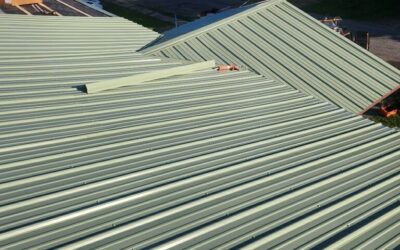Should I File a Claim If My Roof Has Storm Damage? A Complete Guide for Homeowners
Storms can wreak havoc on your home, with the roof often bearing the brunt of the damage. If you’ve recently experienced severe weather and suspect your roof has been compromised, you might be wondering: Should I file an insurance claim? This guide will help you navigate the decision-making process, understand the implications, and take the appropriate steps to protect your home and finances.
Understanding Storm Damage and Insurance Coverage
What Constitutes Storm Damage?
Storm damage encompasses various issues caused by weather events, including:
- Wind Damage: High winds can lift or remove shingles, expose underlayment, and damage flashing.
- Hail Damage: Hailstones can bruise or crack shingles, leading to leaks over time.
- Fallen Debris: Trees or branches can puncture the roof or cause structural damage.
- Water Infiltration: Heavy rains can exploit vulnerabilities, leading to leaks and interior damage.
Does Homeowners Insurance Cover Storm Damage?
Most homeowners insurance policies cover sudden and accidental damage caused by storms. However, coverage specifics can vary:
- Covered Perils: Typically include wind, hail, and falling objects.
- Exclusions: Damage due to neglect, wear and tear, or pre-existing conditions may not be covered.
- Deductibles: You’ll be responsible for paying a deductible before insurance coverage kicks in.
It’s crucial to review your policy details or consult with your insurance agent to understand your coverage.
Assessing the Damage
Conduct a Visual Inspection
After ensuring safety, perform a preliminary inspection:
- Exterior: Look for missing or damaged shingles, dented gutters, and debris on the roof.
- Interior: Check for water stains on ceilings, damp insulation, or leaks in the attic.
Document all findings with photos and notes, as this information will be valuable during the claims process.(Better Homes & Gardens)
Consult a Professional Roofer
Engaging a licensed roofing contractor for a thorough inspection is advisable. They can identify hidden damages and provide a detailed report, which can support your insurance claim.
Deciding Whether to File a Claim
Evaluate the Extent of Damage
Consider the severity and scope of the damage:
- Minor Damage: If repairs are minimal and cost less than your deductible, it might be more economical to pay out-of-pocket.
- Significant Damage: For extensive damage, especially that affecting the structural integrity or leading to leaks, filing a claim is often the prudent choice.
Consider the Impact on Insurance Premiums
Filing a claim can potentially lead to increased premiums. However, if the damage is substantial, the benefits of coverage may outweigh the potential cost increases.
Check the Timeframe for Filing
Insurance policies typically have a window for filing claims after an incident. Delaying beyond this period can result in claim denial.(Time)
The Claims Process
Step 1: Contact Your Insurance Company
Notify your insurer promptly about the damage. Provide them with the documentation you’ve gathered and the roofer’s assessment.
Step 2: Schedule an Adjuster Inspection
An insurance adjuster will visit your property to assess the damage. Having your roofing contractor present can ensure all damages are accurately documented.
Step 3: Review the Claim Settlement
Once the adjuster completes the evaluation, you’ll receive a settlement offer. Review it carefully, and if discrepancies arise, discuss them with your contractor or consider seeking a second opinion.
Step 4: Proceed with Repairs
Upon agreement, coordinate with your contractor to schedule repairs. Ensure all work complies with local building codes and standards.
Preventing Future Storm Damage
While you can’t control the weather, proactive measures can mitigate potential damage:
- Regular Maintenance: Schedule periodic roof inspections and address minor issues promptly.
- Tree Trimming: Keep trees near your home trimmed to prevent branches from falling on the roof.
- Upgrade Materials: Consider impact-resistant shingles or materials designed to withstand severe weather.
Conclusion
Deciding to file an insurance claim for storm-damaged roofing involves careful consideration of the damage extent, repair costs, and potential insurance implications. By conducting thorough inspections, consulting professionals, and understanding your insurance policy, you can make informed decisions that safeguard your home and financial well-being.
If you’re uncertain about the condition of your roof or need assistance with the claims process, don’t hesitate to contact a reputable roofing contractor. Their expertise can provide clarity and support during this challenging time.
 (440) 307-2060
(440) 307-2060


